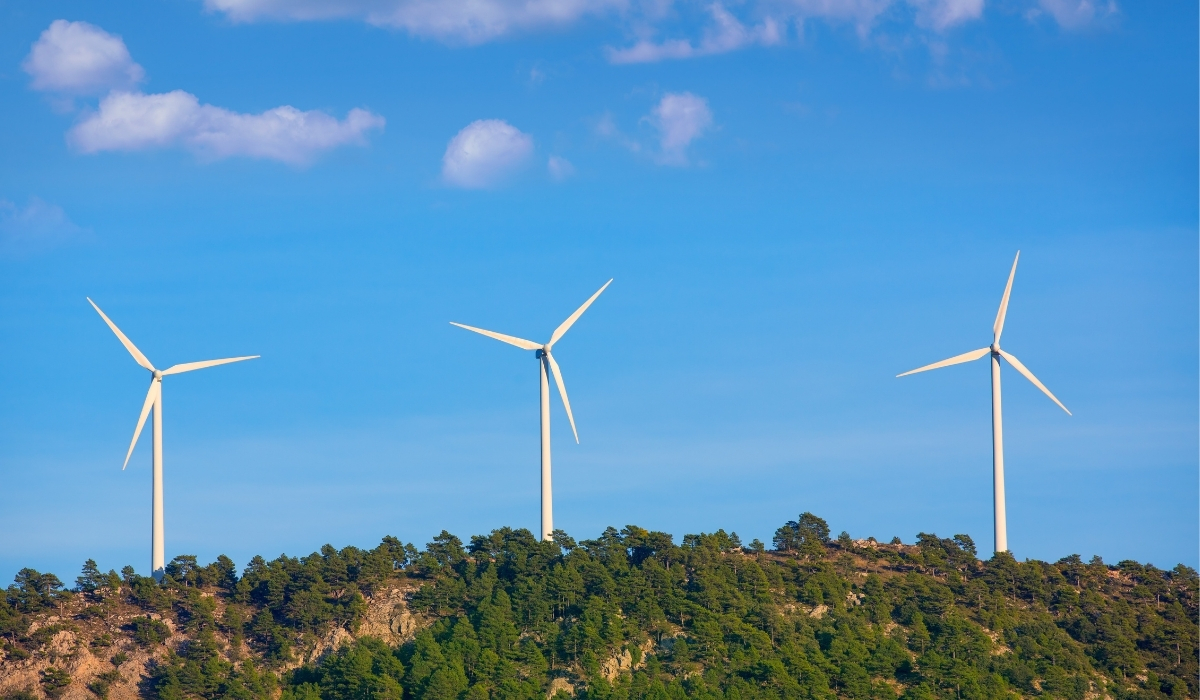Welcome to Part Two of EcoKarma’s two-part series recognizing the Global Choices and Voices Creating World-Changing Solutions. In Voices Among the Changemakers, taking a look at the not so silent ways businesses, people, and communities impact the Sustainability Nexus for Food, Water, and Energy Security.
We’re also highlighting three inspirational voices among the global changemakers. These powerhouses seek to preserve culture, nourish environmental habitats, and provide economic answers while generating world-changing solutions.
Sustainability Nexus: Food Security
For some consumers, any kind of sustainable food and farming advocacy feels like an assault on one’s culture, heritage or religion, far from it. But we’re going to travel through a little bit of history on our food choices before we get to what sustainable food is and why it’s not an attack.
Food security: “Food security exists when all people, at all times, have physical, social and economic access to sufficient, safe and nutritious food which meets their dietary needs and food preferences for an active and healthy life” (FAO, 2018).
The Four Pillars of Food Security:
- Availability: year-round availability includes considerations such as weather, transportation, and storage.
- Access: this encompasses both affordability and the distance of availability from home.
- Utilization: without having access to healthy food, food security for all would lack equity. Having availability and access to the right foods matters.
- Stability: Having access to affordable, healthy food, needs to be at all times- not just during the school year for some.
Prehistoric Diets
Humans (homo sapiens) haven’t always been at the top of the food chain. In fact, at one point in time, our very distant ancestors were somewhere in the middle. One hundred thousand years ago, they’d wait for predators to finish their meaty meal, then scour through the leftovers (Harari, 2015).
Things changed when they developed tools to hunt larger species, but it was subsistence eating that ruled the day, not overconsumption.
Quick note: it’s vital to appreciate conservation, even recreational licensing dollars. Those permits to forage, fish, and hunt allow you to know the source of your ingredients. And seasonal contributions help maintain our natural world–a world we’ve irreparably altered.
Profitability and Metrics of the Food Pyramid
Time travel to 1974, when Sweden developed the food pyramid in response to rising food costs. The problem is that when the US got hold of it, it wasn’t so much about getting a balanced meal as it was cozying up with various food industry lobbyists.
It turns out it was less about actual nutrition and more about profit. Look closely and ask yourself if you could realistically eat six servings of bread/day with days that are bursting with to-do lists. Plus, there’s a marked difference in food categories between the two.
MyPlate Takes a Seat at the Table
All that changed when the USDA adopted MyPlate as the new nutritional standard to factor in people’s actual diet and health and stopped pandering to specific groups.
If you take the online test (there’s an app, too), you’ll get a personalized food plan, including recipes, information, and shopping tips to eat healthy on a budget.
Don’t get me wrong; MyPlate is fantastic. But it lacks data about sustainable farming and fishing practices, food security, soil health, animal rights, and all the things currently understood by just about the entirety of indigenous peoples globally.
That makes as much sense as driving around with a check engine light blaring–and zero concern.
Blue Horizon’s Check Engine Light
Queue Blue Horizon—an investment group for vegan entrepreneurs and spokespeople. Beyond animal rights, they also want to address health issues doubling down on us, like antibiotic resistance.
- With over 800 million (8 + 8 zeros) people starving, Blue Horizon sees that we’ve got a food security problem bursting at the belt.
- Humans may be predisposed to die from cardiovascular and respiratory disease, but we’re also overweight, which worsens our quality of life.
- Animal agriculture takes up 77% of farmland and contributes 18% of greenhouse gas emissions, causing great harm to our ecosystems and overall environment.
- Blue Horizon also recognizes animal rights, and burying one’s head in the sand doesn’t make the issue go away.
Their investments in companies like The Live Kindly Co, No Evil, and Linda McCartney’s (yes, that McCartney), neighbors like you and me can support sustainable water and soil use, farming done by well-paid farmworkers, and pollination by healthy, pesticide-free bees—just by food shopping.
Or, as in the case of Finless Foods, that our food choices help prevent widespread atrocities across the southeast Asian seas, including enslavement on fishing vessels. Or worse, and as a result of Ian Urbina’s reporting, we’ve discovered North Korean fishing boats washing ashore in Japan with dead fishers.
Sustainability Nexus: Water Security
Imagine what it would be like to drive to the next county for water to supply all of your cooking, drinking, washing, and toilet needs. And that happens right here in America. Food and water security go hand-in-hand.
What is water security?
Water security: “… The capacity of a population to safeguard sustainable access to adequate quantities of acceptable quality water for sustaining livelihoods, human well-being, and socio-economic development, for ensuring protection against water-borne pollution and water-related disasters, and for preserving ecosystems in a climate of peace and political stability,” (UN University, 2013).
Gov. Schwarzenegger and NASA Get Involved
California is a major national and global food producer, but at what cost?
Under Governor Schwarzenegger, a well-known environmentalist, NASA’s Gravity Recovery and Climate Experiment (GRACE) studied California’s groundwater loss and discovered a 20 cubic kilometer difference from just seven years earlier. Converted, that’s 4,399,384,965,982 gallons. (See image below. Red constitutes areas of drying groundwater or aquifers.)
Then, under Governor Brown, a renewed state of emergency and the quest for the Sustainable Groundwater Management Act of 2014 intensified.
“[S]cientists warned that ‘[c]ontinued groundwater depletion at this rate might well be unsustainable, with potentially dire consequences for the economic and food security of the United States,’.”
(Leahy, 2016)
Climate Change Exacerbates the Issue
Mitigating the water crisis via the Groundwater Management Act can only do so much. As the planet warms, less snowpack happens in the mountains. Little or no snowpack means little or no melting water throughout the growing season. That result? A singular reliance on rain for that much agriculture sucks up more groundwater resources even with regulated withdrawals.
What can you do?
- Reduce fossil fuel use, skip the plastic bags, buy local, etc
- Insist on change for better irrigation practices (drip) that conserve groundwater
- Join an organization to increase the power of voice over corporate greed
Water Beyond the Farm
In the NASA images below, the first thing one typically notices about Earth is how beautifully blue she is. So, that means water security isn’t just about farm fields and at-home water supplies; it’s also about our oceans’ health.
And over 730 million people on island nations globally heavily rely on the ecosystems inside that gorgeous blue color for food, water, and shelter. But what’s that got to do with California?
Connecting Water Security with Cultural Security
California met its target emissions goal four years early, but the recent fires from droughts aren’t helping the planet out any. That loss of snowpack seen from climate change doesn’t just affect water security here. It’s hammering the earth elsewhere. As US wildfires continue to emit carbon dioxide into the air, something terrible is happening to tiny island nations.
Kathy Jetñil-Kijiner’s Check Engine Light
Since 2010, Kathy Jetñil-Kijiner has highlighted the effects of climate change and global warming on her native Marshall Islands. She’s been exposing the tragedy unfolding in her island home from the US to Guam, Japan, and the Vatican,
Jetñil-Kijiner’s keynote attendance at the United Nations Climate Summit (aka The Leader’s Climate Summit) in New York in 2014 is where she gained more significant international acclaim. After which she’s been able to advance her projects, including:
· Jo-Jikum is an organization which “focuses on creating community-based programs to empower Marshallese youth through training in media, arts, and project management about climate change and other environmental programs.”
· Voices of Our Nations Arts Foundation (VONA) is a “multi-genre workshop for writers of color in the US and brings writers of color from the margins to a community where their work is centralized and honored.”
· 350 Pacific.org is a “youth-led grassroots network working with communities to fight climate change from the Pacific Islands.” Through that organization, she produced the following video.
As each year advances, shorelines disappear—their cultures along with them.
Kathy Jetñil-Kijiner’s voice is just one of 730 million.
Still, she and other leaders like Pope Francis highlight essential facts about environmental justice on these small island nations spanning Polynesia, Micronesia, Melanesia, and Australasia.
Together, they’re empowering people globally, enabling us to recognize and see truths. That droughts in California lead to a cultural loss for the most vulnerable nations.
Sustainability Nexus: Energy Security
Let’s take a closer look at some energy buzzwords.
Sustainable energy is renewable energy, and it comes in the form of hydroelectricity, biomass, geothermal, wind, wave, tidal, and solar energies. But it’s going to take time to transition from our current use of fossil fuels to that of affordable, Earth-friendly options.
What is energy security? Energy security: “the uninterrupted availability of energy sources at an affordable price” (International Energy Agency, 2018).
The Television Comparison
It was 1995, grunge took over Seattle’s music scene, and flat-screen TVs were a novelty—but not for everyone. While some could afford the $15,000 price tag, most could only watch them at the local box store. Fast forward 25 years, sprinkle in a little planned obsolescence, and voilà! You can buy a flat-screen tv for $140.00.
Prices dropped with cell phones, the same will happen with electric cars, and renewable energy will cost less, too.
Sorry, but Fossil Fuels are Finite (Not Really That Sorry)
It’s no surprise that industry giants have particular doors into politics to support maintaining a take-make-waste society. Instead, what’s surprising is the psychology used to bend and twist the truth for specific demographics—with proven knowledge of climate change’s effects.
The biggest riddle is why we’d wait until all the fossil fuels are gone before we start building renewable energy resources. We’d be in the dark until it all got figured out.
The Orkney Islands Check Engine Light
Queue a tiny archipelago off the northern coast of Scotland that has become a literal powerhouse of renewable energy study, application, and business goals.
Generating Wind, Tidal, and Hydrogen Energy in Orkney aims to:
- “Ensure Orkney uses energy as efficiently as possible and has a secure and affordable energy supply to meet its future needs” and to improve social welfare and health while reducing costs to the consumer.
- “Add value to Orkney’s renewable energy resources, for the benefit of the local economy and local communities, while minimizing damage to the environment” so that they can sustain the economy far into the future.
- And “reduce Orkney’s carbon footprint” as part of the greater community here on Earth.
Listen, and you’ll hear the sentiment of a country that wants to shape its future. By achieving this energy security, they’re poised for more remarkable economic development, including lower energy pricing.
By mitigating climate change effects through this economic development, they join similar voices fighting for a shoreline—and a culture. So, if one tiny archipelago can turn renewable, what’s our roadblock?
The Natural World and Security
Sure, not every nation on the planet has the same access to wind and tidal energy as the Orkney Islands. But every country deserves equal access to the same food, water, and energy security as everyone else.
But when careless consumption and ignorance of climate issues threaten cultures and nations that are 730 million strong (11% of the global population), we’ve got to stop and think about how habits and choices impact the future of people we’ll hear but never see.
Sources:
The Animated Rendering of North Korean Fishermen. (2020). The Outlaw Ocean. YouTube. https://youtu.be/iqjvRsDskMI
Alimentarium. (2017). Origins of the food pyramid. https://www.alimentarium.org/en/knowledge/origins-food-pyramid
Bennett, H. (2020). The Orkney Islands: The energy revolution starts here. https://www.sciencefocus.com/future-technology/the-orkney-islands-the-energy-revolution-starts-here/
Burdett, M. (2018). The water–food–energy “nexus.” https://geographycasestudysite.files.wordpress.com/2018/08/null.png?resize=601%2C514
Famiglietti, J.S., et al. (2011). Satellites Measure Recent Rates of Groundwater Depletion in California’s Central Valley, 38 GEOPHYSICAL RES. LETTERS L03403, at 1. http://online library.wiley.com/doi/10.1029/2010GL046442/epdf.
FAO [United Nations Food and Agricultural Organisation). (2018). Food security statistics. http://www.fao.org/economic/ess/ess-fs/en/
Harari, Y. N. (2015). Sapiens. New York, NY: Harper Collins.
International Energy Agency. (2018). Energy Security. https://www.iea.org/topics/energysecurity/
Kathy Jetñil-Kijiner. (2021). https://www.kathyjetnilkijiner.com/
Leahy, T. (2016). Desperate Times Call for Sensible Measures: The Making of the California Sustainable Groundwater Management Act, 9. Golden Gate U. Envtl. L.J. 5. http://digitalcommons.law.ggu.edu/gguelj/vol9/iss1/4
Newman, E., et al. (2018). “Effects of anthropogenic wildfire in low-elevation Pacific island vegetation communities in French Polynesia.” PeerJ vol. 6 e5114. 20. doi:10.7717/peerj.5114
Orkney Islands Council. (2020). H2 in Orkney – The Hydrogen Islands. https://www.orkney.gov.uk/Service-Directory/Renewable/h2-in-orkney-the-hydrogen-islands.htm
Orkney Islands Council. (2009). A Sustainable Energy Strategy for Orkney. Orkney Islands, Scotland. https://www.orkney.gov.uk/Files/Business-and-Trade/Orkney_Sustainable_Energy.pdf
Smallwood, K. (2014). Who Invented the Food Pyramid? http://www.todayifoundout.com/index.php/2013/09/invented-food-pyramid/
Stokstad, E. (2020). Droughts exposed California’s thirst for groundwater. Now, the state hopes to refill its aquifers. https://www.sciencemag.org/news/2020/04/droughts-exposed-california-s-thirst-groundwater-now-state-hopes-refill-its-aquifers
UN University. (2013). Water Security & the Global Water Agenda: A UN-Water Analytical Brief. http://www.fao.org/3/a-i2930e.pdf Accessed 21 August 2018.
Meet Your Author

Amy Wolkenhauer has been a full-time freelance writer since 2014. Her Bachelor of Arts degree in English and Bachelor of Science degree in Sustainability complement each other.
Combined, these degrees provide her with the communication tools necessary to create tangible links between scientists, stakeholders, marketplace & policy actors with communities everywhere.




